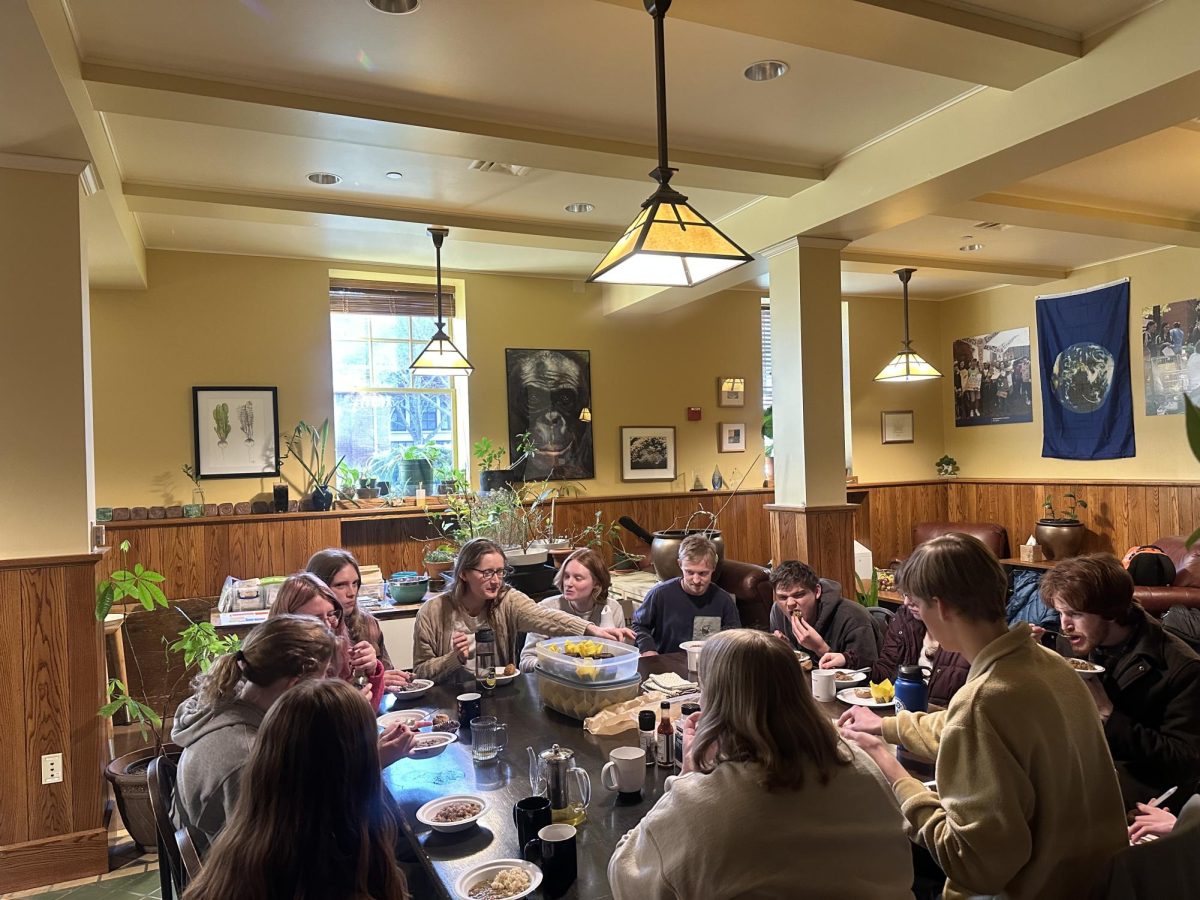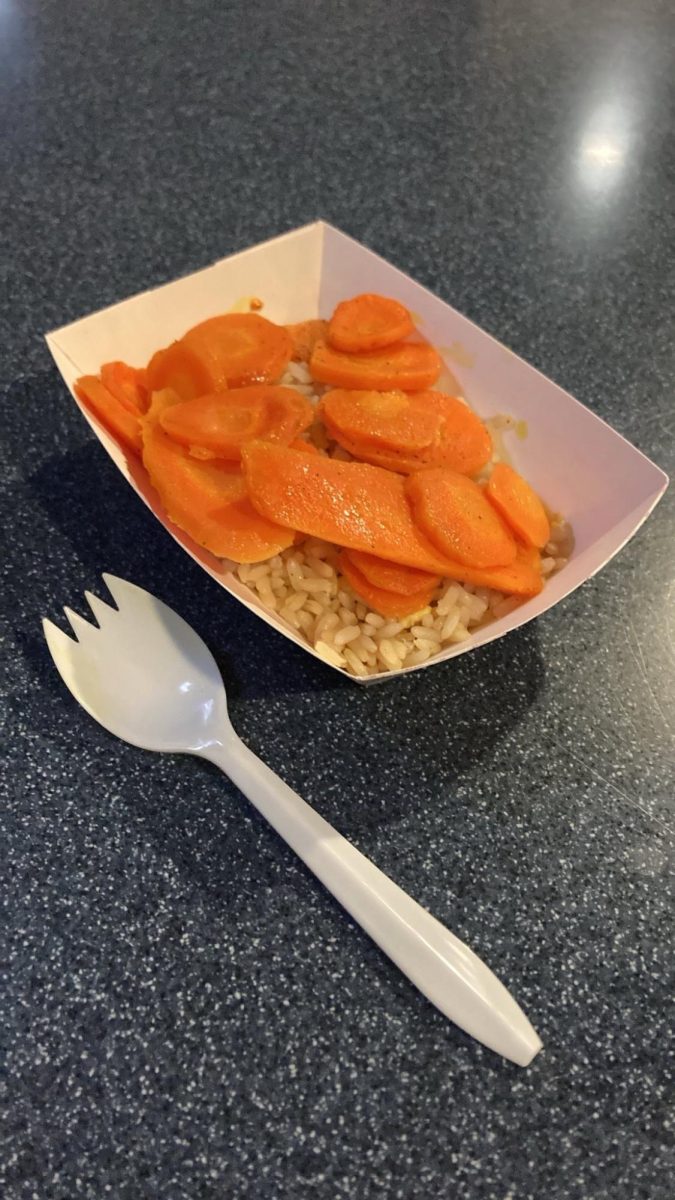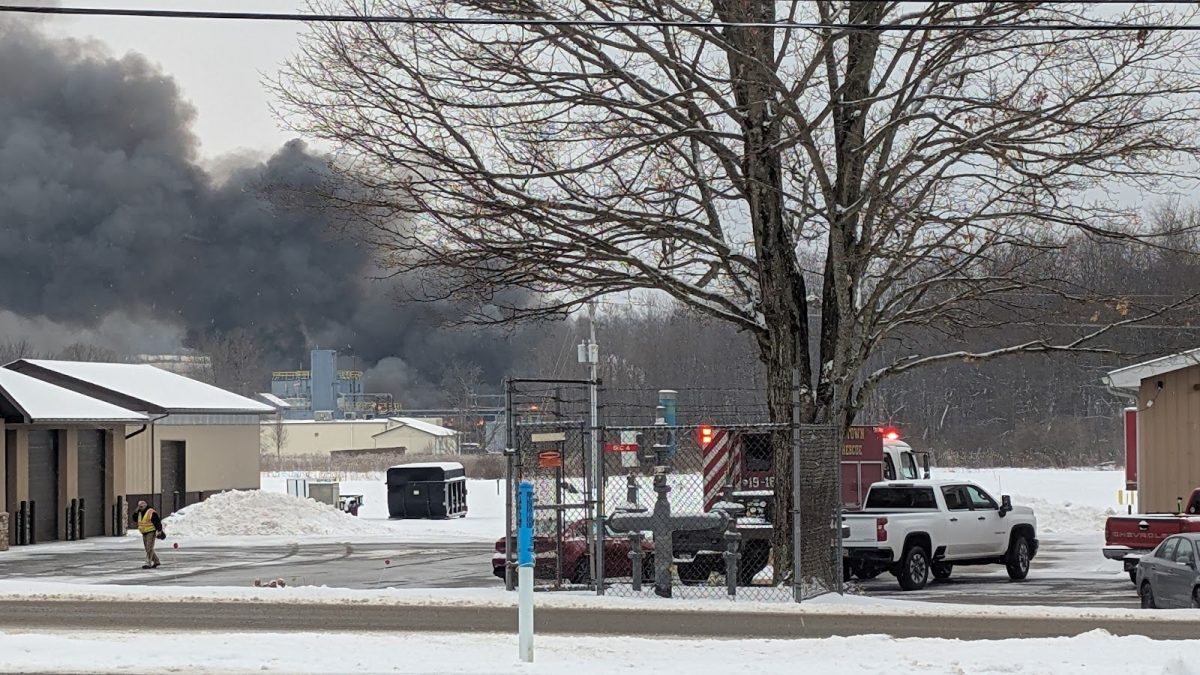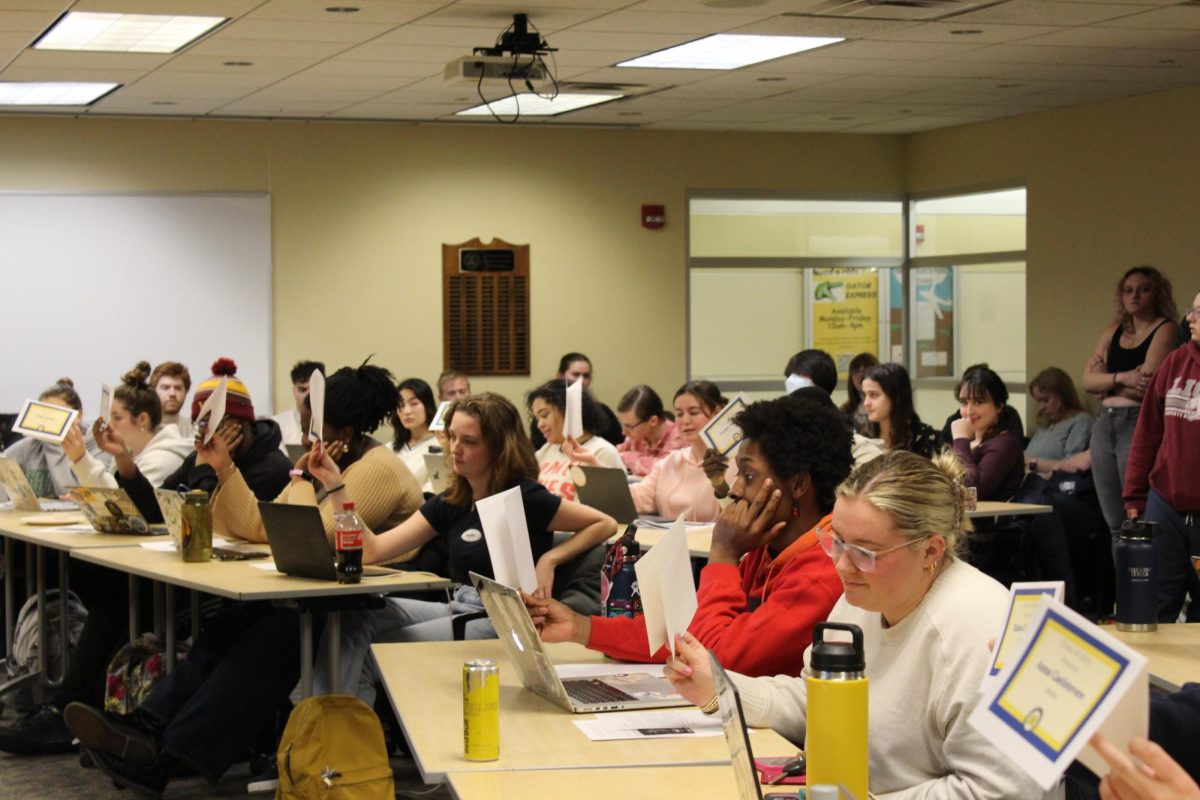Allegheny College prepares to enter a new era as new donations from alumni families totaling $14 million were announced on March 26, bringing the gift total during President Ron Cole’s tenure to just over $70 million dollars.
“Gifts of this magnitude tend not to just pop up overnight,” said Vice President for Institutional Advancement Matt Stinson. “Usually there’s a longstanding relationship of continued built trust.”
The announcement came almost two months after Cole laid the groundwork for the college’s vision of remodeling in his “State of the College” address in February. In the address, Cole told the assembly that the college was “investing in our future” and announced the first number of gifts with their corresponding projects, including a $10 million donation from Patricia Bush Tippie, ’56, for the renovation of Brooks Hall and a $2 million donation from Christine Scott Nelson, ’73.
With donations from the multi-generational Skattum, Tillotson and Nelson alumni families, plans are in place to bring further upgrades to campus.
The press release for the most recent gifts highlighted Dag Skattum, ’84, and Julie Grosjean Skattum, ’85, who donated $7 million for the creation of the tentatively-titled Center for Faculty Research and Teaching Excellence.
The new center is set to occupy the third floor of Pelletier Library, which is currently a place of quiet study.
An additional $4 million came from Carol Hefren Tillotson, ’54, and $1 million from Kim Tillotson Fleming and Curt Fleming to go towards the modernization of Quigley Hall.
“There’s amazing education that takes place inside Quigley, and the building does not represent the caliber of the faculty and the programs that are in there,” Stinson said.
Stinson also said that for a college of this size, gifts of this magnitude were unusual, and they had already surpassed the initial goal of his team. He credits this to “the strong leadership of President Cole” as well as the passion alumni have for the college and the strategic pathway Cole outlined back in February.
“We went through the strategic planning, ultimately creating those five pathway goals,” Stinson said. “People relate to them, and they want to be a part of moving the college forward. People are responding really, really well to the leadership of President Cole.”
The announcements of new gifts further continues the agenda of the strategic pathway’s five goals, which highlight the areas of the college that are intended to be remodeled or improved.
The first goal, “Academic Excellence and Strong Outcomes,” is a “doubling-down” of what the college already does in staying true to the college’s liberal arts core, academic rigor, and preparation for students’ life after Allegheny, Stinson said.
The second goal of the strategic pathway is a “Vibrant and Inclusive Campus.” This goal allows for updating the college’s facilities to improve overall student life experience, from academics to dorm life. The first steps have already been taken with the donations to modernize Quigley and Brooks halls.
Specifically to the goal of a “Vibrant Campus,” Stinson said they are working towards bringing the quality of dorm life of the upperclassmen to the underclassmen.
“I think Brooks is an awesome footprint,” Stinson said. “The high ceilings in there are cool, the vibe in there is cool, the history and the nostalgia in there is cool.”
The third goal is to “Broaden Academic Offerings,” reflected in the forms of lifelong learning, remote learning and microcredentials. Stinson said that full-time, undergraduate students will always be first priority, but the college is still looking to broaden who it brings education to, a sentiment seen in action through the creation of an outpost of the Allegheny Lab for Innovation and Creation (ALIC) in Meadville.
The fourth goal, “Community and Economic Development,” intends to strengthen bonds with the Meadville community and bring more funding opportunities, with the ultimate goal of economic vitality and revitalization.
The fifth and final goal of “Operational and Financial Sustainability” looks to improve short-term financial alignment, and ultimately increase total enrollment and retention of students.
Through the collaboration of Stinson’s team and input from alumni, faculty, and students, they can collectively determine which aspects of the college have the most pressing needs. “Everything that we are doing ties into the priorities that are coming from that collaborative process,” Stinson said.
In the upcoming months Stinson hopes to make sure the entire campus understands the pathway and how they see themselves in it.
“We’ll start to see the impact of these donations moving forward with shovels in the ground, new programs on campus, and more financial aid for students,” Stinson said.
The college has laid out the plans and funding for many upcoming projects. A groundbreaking ceremony for construction on Reis Hall is set for late April, according to Director of Physical Plant Joseph Michael. The eventual goal is to house ALIC within Reis Hall.
With the help of PJ Dick, a construction company from Pittsburgh, Physical Plant has begun mapping out the building for Brooks Hall and have already started on designs, as well as the discovery, looking for any hazards, and getting an assessment for the overall structure of the building. A Meadville company, Associated Contractors Incorporated, will give the estimate of feasibility to install an elevator in Brooks.
The “discovery” process for Reis Hall is still ongoing, said Michael, and students may have seen the ramp for excavators to be able to reach and assess the higher level floors. Workers have already identified some hazards in the building, including asbestos tiles that need to be removed.
Physical Plant has yet to receive full funding to begin work and discovery on Quigley Hall and will not begin until they have received at least 80% of the funding, Michael said. Fortunately for Quigley Hall, there is a better understanding of the building because it was more recently constructed — built in 1953 in comparison to Reis Hall which was built in 1902.
“I’m excited to think about potential students taking tours of this amazing school with construction going on everywhere,” Stinson said. “That’s a sign of a school that’s on the rise, of a school that’s investing not retreating. That’s going to be an exciting day that’s not too far around the corner.”
Categories:
$14M gift to help update Quigley, add faculty center

Gallery • 2 Photos
Story continues below advertisement
2
Tags:
More to Discover
About the Contributors
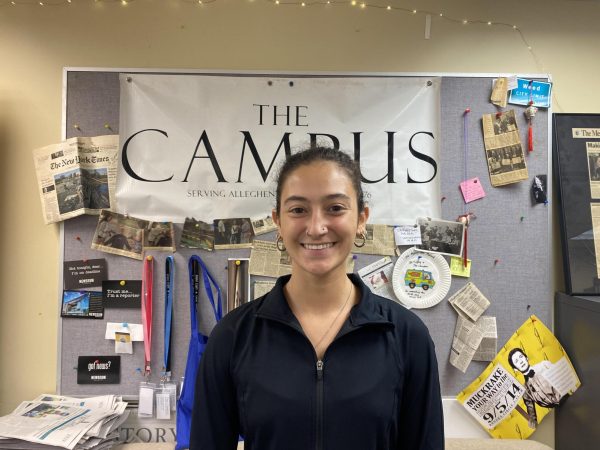
Aubryanna Snyder, Features Editor
Aubryanna Snyder is a sophomore from Aliquippa, PA. She is a Political Science major and Journalism minor and is also on the Track and Field team. This is her second semester on staff and first semester as Features Editor. She has studied journalistic writing since her freshman year of high school and has always enjoyed getting to help people tell their stories. When she’s not writing or running, she enjoys hot caffeinated drinks and long T.V. binges!

Sami Mirza, Editor-in-Chief
Sami Mirza is a senior from many different places. He is majoring in International Studies with a focus on the Middle East and North Africa and minor in Arabic. This is his fourth year on staff and his second in the EIC position; he has previously worked on News and Features. When not writing, shooting, or editing for The Campus, Sami can be found playing a surprisingly healthy amount of video games, working the graveyard shift at Pelletier Library, and actually doing his homework.





